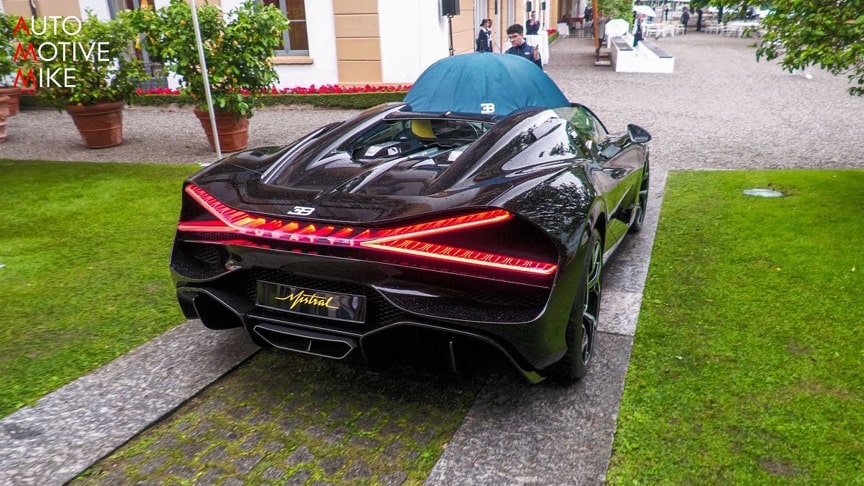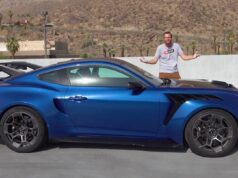During the Concorso d’Eleganza Villa d’Este I have filmed the all new Bugatti Mistral. Since it doesn’t have a roof, the Mistral isn’t really a car to drive it the rain.The W16 era is ending as Bugatti is bidding adieu to the quad-turbo, 8.0-liter engine with the Mistral. The Chiron-based roadster is named after a wind blowing from the Rhône River valley that also served as inspiration in the 1960s for a namesake coupe/convertible sold by Maserati (and a 1990s Nissan Mistral in Japan). Speaking of past cars, the roofless machine from Molsheim boasts design cues derived from the Type 57 Roadster Grand Raid.

The 1930s influence can be seen in the curving windscreen as well as the roof-mounted dual air scoops to cool the engine. While the styling harkens back to a classic model, the Mistral does seem like a combination between the Divo and La Voiture Noire in a roadster package with an “X” motif for the taillights reminding us of the track-only Bolide. The rear light configuration has allowed Bugatti to install vents in between the X beams for cooling purposes.
For the first time in a W16 Bugatti, woven leather was used on the door cards. In addition, the gear shifter machined from a solid block of aluminum has wood accents and an amber insert depicting Rembrandt Bugatti’s “dancing elephant” also found on the Type 41 Royale roadster’s hood. Of course, the cabin’s real highlight is removing the roof to hear the W16 and its four turbochargers at work.
Advertisement
At the heart of the Mistral is the same 1,577-horsepower engine found in the Chiron Super Sport 300+, which hit 304.773 mph (490.484 km/h) in 2019. Speaking of going ludicrously fast, Bugatti says that for the Mistral, “there can only be one goal in mind: to become the fastest roadster in the world once more.” It would be a follow-up to the Veyron 16.4 Grand Sport Vitesse and its 254.04 mph (408.84 km/h) performance in 2013.










